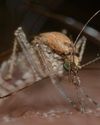Try GOLD - Free
Leopard Human Conflict In Uttarakhand, India
Scientific India
|July-August 2018
Leopard's attacks on humans have been a serious issue in Uttarakhand, India for many decades.
-

Not a single month goes by without newspaper headline about leopard or a tiger attacks on humans in Uttarakhand. Wildlife experts have attributed that gradual encroachment of forest and decline prays sizes are main cause of increasing human-animal conflicts in the state. Reports of human encounters with leopards and other wild species with human are a regular feature in the mountain state that is home to several wildlife reserves. The rate of human-animal conflict cases in Uttarakhand is the highest in the country. The seriousness of the menace can be gauged from the fact that leopards have been killed over 600 people and another over 3,100 people had injured in the last 17 years in Uttarakhand. According to Hindustan times, Dehradun issue June 13, 2018 on basis of state forest officials, 182 big cats, including 166 leopards and 16 tigers, as has been declared as man-eaters since the last 15 years after the formation of Uttarakhand in 2000. According to the Wildlife Protection Society of India (WPSI), more than 28 leopards lost their lives, highest number in Uttarakhand, taking the toll to 288 half of this year in country. “Man-eating” has been made infamous by renowned hunter turned naturalists like Jim Corbett (1944) after the two extreme Leopard human conflict cases occurred in British India. The first leopard, "the Leopard of Rudraprayag", known as a male maneater, killed more than 125 people in Uttarakhand and the second, the "Panar Leopard", was believed to have killed more than 400 people in Madhya Pradesh. Both were killed by hunter cum conservationist Jim Corbett.
This story is from the July-August 2018 edition of Scientific India.
Subscribe to Magzter GOLD to access thousands of curated premium stories, and 10,000+ magazines and newspapers.
Already a subscriber? Sign In
MORE STORIES FROM Scientific India
Scientific India
Japanese physicists were the first to measure the most tolerant entanglement state, the W state
There are many unusual things that happen in the world of quantum physics.
3 mins
September - October 2025

Scientific India
The Fifth Force: Could It Unlock the Secret of Dark Matter?
What if the universe is powered by a force we've never seen before? For centuries, science has explained nature with four fundamental forces.
3 mins
September - October 2025

Scientific India
A flu test you can chew
As flu season nears in the northern hemisphere, scientists are exploring a surprising new way to detect infection: through taste.
1 mins
September - October 2025

Scientific India
Lab-Grown Kidney Brings Artificial Organ Dream Closer to Reality
In a major leap toward bioengineered organ replacement, scientists have successfully grown human kidney 'assembloids' in the laboratory that mimic key structural and functional features of natural kidneys.
1 min
September - October 2025

Scientific India
Your pumpkin might be hiding a toxic secret
Pumpkins, squash, zucchini, and other members of the gourd family have a surprising trait: they can take up pollutants from the soil and store them in their edible parts.
1 mins
September - October 2025

Scientific India
2025 Nobel Prize in Physics Reveals Quantum Secrets in Superconducting Circuits
The 2025 Nobel Prize in Physics has been awarded to John Clarke, Michel H. Devoret, and John M. Martinis for their pioneering experiments that brought quantum mechanics from the invisible atomic world to the macroscopic scale a system large enough to hold in your hand.
1 mins
September - October 2025

Scientific India
Genomic Evidence Redefines the Evolutionary Age of Mosquitoes
A new genetic analysis has shaken up what we thought we knew about one of humanity's most notorious pests the mosquito.
1 min
September - October 2025

Scientific India
Nobel Prize in Chemistry 2025: Building Molecular Architectures with Room to Breathe
In a scientific breakthrough that bridges molecular design with planetary-scale problems, the 2025 Nobel Prize in Chemistry has been awarded to Susumu Kitagawa, Richard Robson, and Omar Yaghi.
1 mins
September - October 2025

Scientific India
Guardians of Immunity: Nobel Prize 2025 Honors Discoveries that Keep the Immune System in Check
The 2025 Nobel Prize in Physiology or Medicine has been awarded to Mary E. Brunkow, Fred Ramsdell, and Shimon Sakaguchi for their groundbreaking discoveries in the field of peripheral immune tolerance a crucial mechanism that prevents the body's immune system from turning against itself.
1 mins
September - October 2025

Scientific India
'Is cold nuclear fusion feasible?
In early May 1989, two chemists from the University of Utah, Pons and Fleischmann, arrived in Washington, U.S.A. The aim is to present their findings to members of the US Congress.
3 mins
September - October 2025
Translate
Change font size
